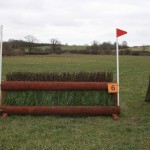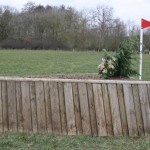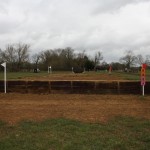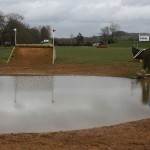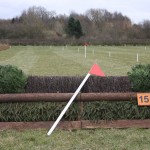At BE80 the speed is 435m/minute. At BE90 it’s 450m/minute over a similar distance and you might see a half coffin, steps and a trakehner as well a narrow fence, corner or bank. You will not be expected to jump a bounce, bullfinch, full coffin or sunken road.
I would expect to see a maximum of three combinations on the course, and the other obvious inclusion at this level is that of alternatives. You should understand the principle of alternative fences and of “black flagging” which is where an alternative is on offer without being penalized. It will just take more time.
A designer can also use frangible devices at this level, which is nothing to worry about. This just means that there is a 90cm minimum drop which is required to be able to pin or use MIM clips on a fence. They are still unlikely to be used at this level, but be assured it is a good thing if you do happen to spot one!
